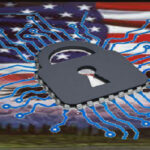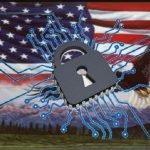802 Standard is the technical side of the the internet. Cyber Security is the locking down the miss use of the 802 attempting to prevent criminal activity. The failure of Cyber security is due to politics and ignorance. Logic is solid at the 802 ground level, Just ones and zeros. Its what is above this that the games are played allow holes for criminal activity.
In the AI document, AI say these point below. But I say that cyber security is required because man has made standards above the 802 standard to allow activity that can lead to nefarious activity.
Until a national disaster occurs, these holes that allow nefarious will continue.
So we take this somewhat loose standards above 802 and add nefarious AI to the mix and a world dominated by bad characters will control the internet.
The internet must controlled nationally based on the laws of the land. And as any asset need Identity control and monitoring. We must Protect our borders
What is there about 802 that requires cyber security policies
802 standards themselves do not directly require cybersecurity policies,
as they define the technical specifications for networking technologies.
However, the implementation and usage of these standards can pose security
risks if not properly managed. Here are a few reasons why cybersecurity
policies are necessary when using 802 standards:
- Unauthorized Access: If not properly secured, networks based on 802
standards can be vulnerable to unauthorized access. Cybersecurity policies
should include measures to prevent and detect unauthorized access, such as
strong passwords, multi-factor authentication, and regular security
audits. - Data Breaches: If data is transmitted over networks based on 802
standards, it can be at risk of being intercepted or stolen. Cybersecurity
policies should include measures to protect data, such as encryption,
secure data transmission protocols, and regular backups. - Malware and Viruses: Networks based on 802 standards can be vulnerable
to malware and viruses. Cybersecurity policies should include measures to
prevent and detect malware, such as antivirus software, regular software
updates, and user education. - Denial of Service (DoS) Attacks: Networks based on 802 standards can be
targeted by DoS attacks, which can disrupt or disable the network.
Cybersecurity policies should include measures to detect and mitigate DoS
attacks, such as intrusion detection systems and traffic monitoring. - Compliance with Regulations: Depending on the industry and the type of
data being transmitted, there may be regulations that require certain
cybersecurity measures. Cybersecurity policies should be developed to
comply with these regulations.
In summary, while 802 standards do not directly require cybersecurity
policies, the implementation and usage of these standards can pose
security risks. Therefore, it is essential to develop and implement
cybersecurity policies to protect against these risks.
This picture shows the ignorance of our government. Its going to take a president who is internet savy. Not Al Gore and certainly not Obama.

802 is a series of standards for implementing networking technologies. The
most well-known standards in this series are:
- 802.3: This standard defines the specifications for Ethernet networks.
It includes different versions like Fast Ethernet (802.3u), Gigabit
Ethernet (802.3z), and 10 Gigabit Ethernet (802.3ae). - 802.5: This standard defines the Frame Relay access method for use on a
wide area network (WAN). - 802.11: This standard defines the specifications for wireless computer
communication using radio waves. It includes different versions like Wi-Fi
4 (802.11n), Wi-Fi 5 (802.11ac), and Wi-Fi 6 (802.11ax). - 802.1Q: This standard defines VLAN tagging, which allows multiple
virtual LANs to be created on a single physical network. - 802.1x: This standard defines a port-based network access control
system that allows only authorized devices to connect to a network. - 802.3ab: This standard defines the high-speed Ethernet standard, also
known as Gigabit Ethernet. - 802.3ba: This standard defines the 10GBASE-T standard, which allows 10
gigabit Ethernet to be run over twisted pair cabling. - 802.3cd: This standard defines the 40/100 GbE over SMF standard, which
allows for the deployment of 40 and 100 gigabit Ethernet over single-mode
fiber. - 802.3aq: This standard defines the Link Aggregation Control Protocol
(LACP), which allows multiple physical links to be combined into a single
logical link. - 802.3w: This standard defines the Energy Efficient Ethernet (EEE)
standard, which reduces power consumption by allowing devices to enter
energy-saving modes when not in use.





Leave a Reply